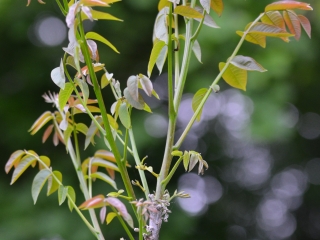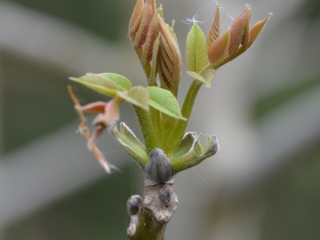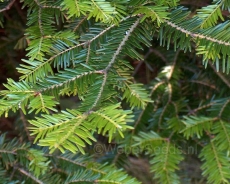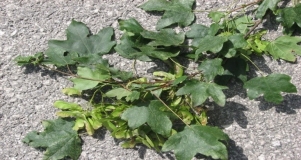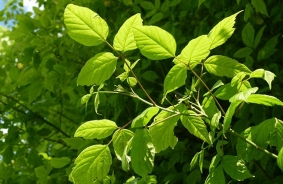Common walnut Juglans regia
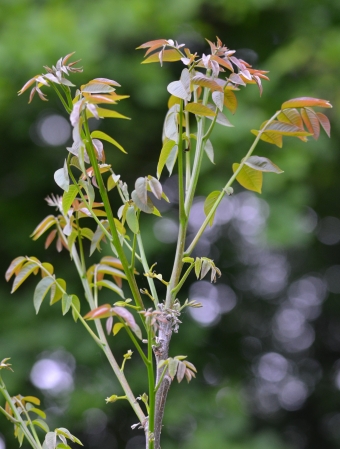
Features
The characteristic smell of walnut is recognizable, it contains a lot of essential oils, fats, tannins and a special substance juglon, which is found in decaying leaves and fruits and inhibits the growth of other plants in the soil. Therefore, under walnut trees, other plants mostly do not thrive.
| Species | Trees (Macrofanerophytes) |
| Living space | Treeline |
| Size | 10-30 m |
Description
Juglans regia is a large deciduous tree, attaining heights of 10-30 m, and a trunk up to 2 m in diameter, commonly with a short trunk and broad crown, though taller and narrower in dense forest competition. It is a light-demanding species, requiring full sun to grow well. The bark is smooth, olive-brown when young and silvery-grey on older branches, and features scattered broad fissures with a rougher texture. Like all walnuts, the pith of the twigs contains air spaces; this chambered pith is brownish in color. The leaves are alternately arranged, 25–40 cm long, odd-pinnate with 5–9 leaflets, paired alternately with one terminal leaflet. The largest leaflets are the three at the apex, 10–18 cm long and 6–8 cm broad; the basal pair of leaflets are much smaller, 5–8 cm long, with the margins of the leaflets entire. The male flowers are in drooping catkins 5–10 cm long, and the female flowers are terminal, in clusters of two to five, ripening in the autumn into a fruit with a green, semifleshy husk and a brown, corrugated nut. The whole fruit, including the husk, falls in autumn; the seed is large, with a relatively thin shell, and edible, with a rich flavour.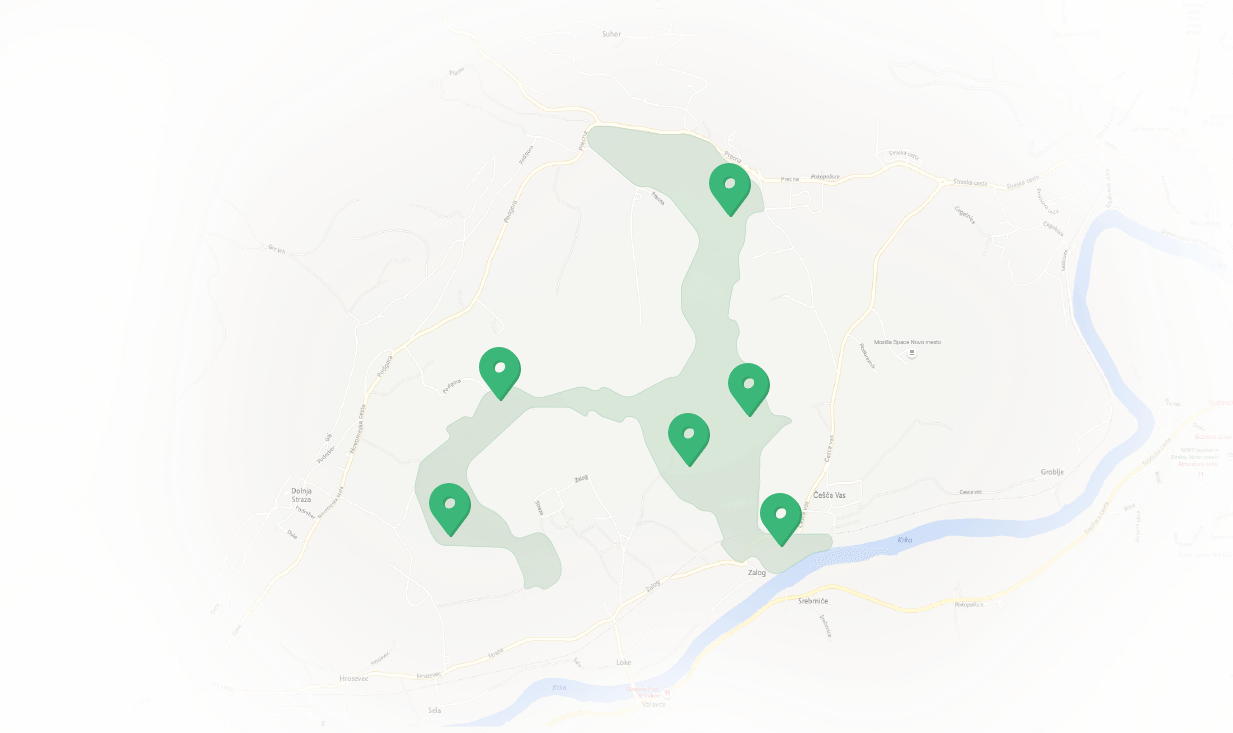
Features Temenica (3)
SPECIAL ogr.

